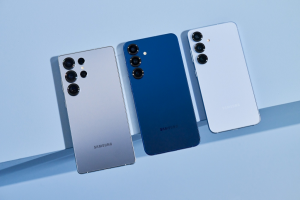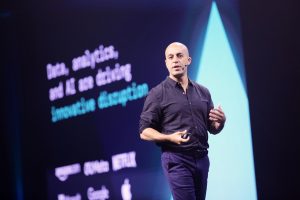Motorola Mobility’s Epic Win against Apple
![]() Earlier today, we reported that the Australian ban on the Samsung Galaxy Tab 10.1 has been lifted in Samsung’s third win against Apple. And now, fresh from the Mannheim Regional Court, Motorola Mobility won its own patent case against Apple. The ruling includes a preliminary injunction against Ireland-based Apple Sales International in exchange for a €100 million ($134 million) bond, unless Apple wins a stay. The ruling encompasses the following devices: iPhone, iPhone 3G, iPhone 3GS, iPhone 4, iPad 3G and iPad2 3G. The iPhone 4S, though it may be using the same infringing technology, was not mentioned since the case was filed back in April, months before the device was launched.
Earlier today, we reported that the Australian ban on the Samsung Galaxy Tab 10.1 has been lifted in Samsung’s third win against Apple. And now, fresh from the Mannheim Regional Court, Motorola Mobility won its own patent case against Apple. The ruling includes a preliminary injunction against Ireland-based Apple Sales International in exchange for a €100 million ($134 million) bond, unless Apple wins a stay. The ruling encompasses the following devices: iPhone, iPhone 3G, iPhone 3GS, iPhone 4, iPad 3G and iPad2 3G. The iPhone 4S, though it may be using the same infringing technology, was not mentioned since the case was filed back in April, months before the device was launched.
According to Florian Mueller in his post in the FOSS PATENTS, “the ruling stated that Apple could modify their products by removing the patented feature so as to steer clear of further infringement. It remains to be seen whether this is a commercially viable option for Apple. This feature could be somewhat fundamental to wireless data transfers in general.”
The patent pertained in the case is the EP (European Patent) 1010336 (B1), which is the “method for performing a countdown function during a mobile-originated transfer for a packet radio system.”
Quinn Emanuel, the premier business litigation firm in the United States, is behind Apple’s demise. The firm was responsible for blocking Apple’s pursuit for Samsung’s US ban and now the Motorola patent win.
Though the company is celebrating, their consumers aren’t, as Motorola revealed that the Android 4.0 won’t be available anytime soon. It looks like only their new products will get the Ice Cream Sandwich update when it does roll out. The following devices are said to be the ones getting the update: Droid RAZR, Droid Bionic and Xoom tablets.
“Like you, we are excited to see that Google released the source code to Android Ice Cream Sandwich (ICS)!” Motorola stated in a blog posting.
“There are many steps and processes that go into Ice Cream Sandwich in a way that works for the carrier and for you,” Motorola states, adding, “once source code is released from Google, it doesn’t automatically update to your device.”
Sony Ericsson explains the reason for Android’s fragmented release, stating that carriers play an important role as to when updates would be available.
“Contrary to what people may think,” Sony Ericsson states, “it is not the Bring up phase [adding vendor hardware and software customizations], but the Certification and approval phase that is the most time consuming process when it comes to getting a new software release out on our phones.
“This is one of the major tasks that are legally required from us as phone manufacturer, but is a task that the custom ROM community doesn’t have to take into consideration. Furthermore, by putting all this efforts into testing and certification, we ensure that quality and conformance is at a top level, in benefit for all consumers worldwide.”
A message from John Furrier, co-founder of SiliconANGLE:
Your vote of support is important to us and it helps us keep the content FREE.
One click below supports our mission to provide free, deep, and relevant content.
Join our community on YouTube
Join the community that includes more than 15,000 #CubeAlumni experts, including Amazon.com CEO Andy Jassy, Dell Technologies founder and CEO Michael Dell, Intel CEO Pat Gelsinger, and many more luminaries and experts.
THANK YOU










